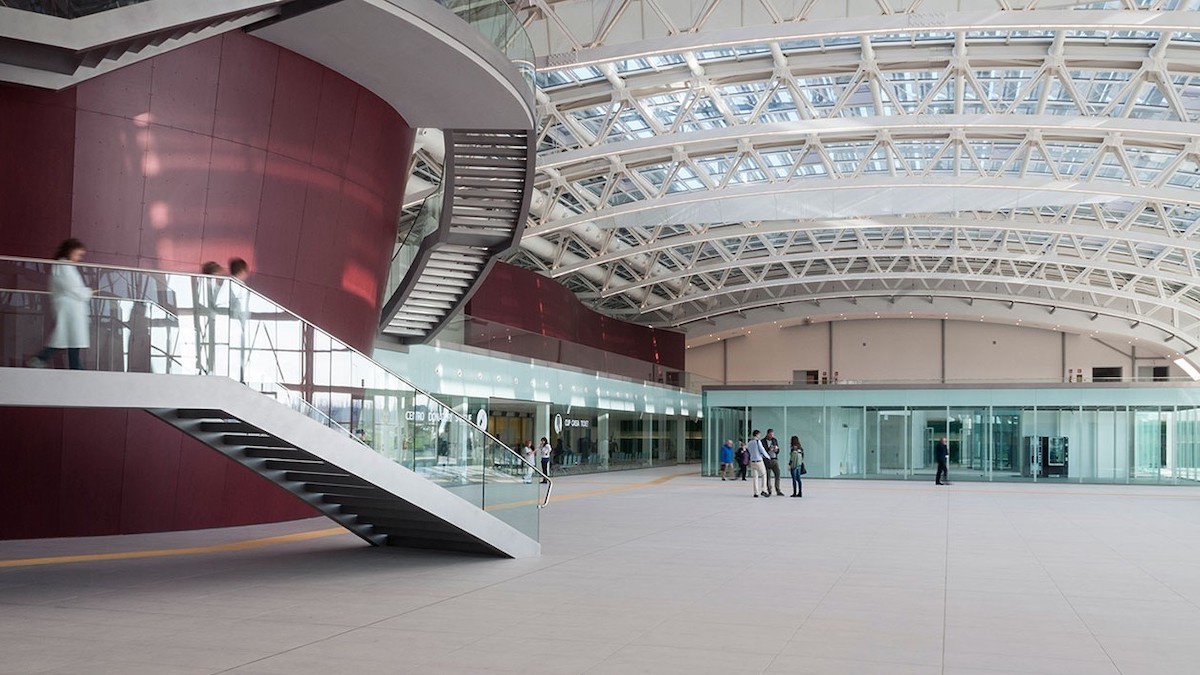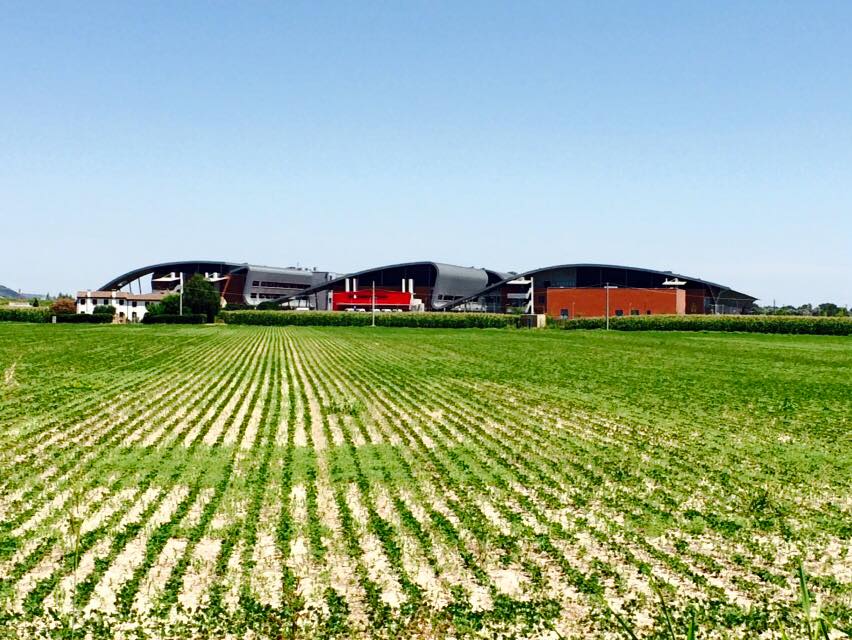
Gemmo transforms Ospedali Riuniti Padova Sud into models of energy efficiency. Trigeneration and geothermal energy for comfort and sustainability.
Bassano del Grappa, January 2016 – The complex of the new Padua South Reunited Hospitals rises in the middle of a large green area in Monselice and features a horizontal layout with three factory buildings totaling 75,000 m2 of gross floor area. The buildings are no more than three stories high above ground plus two technical levels. The undulating profile of the roofs is reminiscent of the landscape of the surrounding hills and allows the complex to fit harmoniously into its surroundings.
Indeed, the issue of energy conservation was vital from the earliest stages of the new hospital’s design. Theenergy analysis carried out during the design phase led to the choice of a trigeneration system based on 2 802 kWe motors and 1 900 kWf absorber. The advantages associated with the use of a trigeneration system are the reduction of energy consumption and related pollutant emissions, the defiscalization for the purchase of methane, and the obtaining of TEEs with their consequent economic valorization.
Increased energy efficiency
To further increase theenergy efficiency of the hospital facility, a geothermal field, consisting of 1,300 vertical closed-loop probes, was added to the trigeneration system.
The probes are attested on 3 Climaveneta NECS-WN/B heat pumps, placed in the thermo-cooling substations and connected directly to the secondary distribution manifolds. The geothermal field in winter produces hot water at 45 °C (total output 450 kW; COP 4.5), while in summer it provides chilled water at 7 °C (500 kW; EER 5.0). In addition to economic savings, this renewable energy source reduces pollutant emissions and provides a reserve of heating and cooling power for the plant.
Gemmo SpA, which did all the plant engineering work at the Monselice hospital complex, chose Climaveneta to supply air treatment systems. In fact, a highly efficient solution was also chosen for air treatment with the installation of 132 WIZARD air handling units from Climavenata that achieve a total air flow rate of more than 900,000 m³/h. All unit components have been carefully designed and selected to meet the most stringent cleanliness and hygiene requirements typically demanded by hospital facilities, while ensuring maximum room comfort and low noise levels.
Cristiano Dal Seno, AHU Development Manager at Climaveneta states:
“Climaveneta’s air handling units are complete with all the necessary components to ensure filtration, humidification, heat recovery and optimal air quality, consistent with the sustainability-oriented approach of the New Padua South Reunited Hospitals. Ensuring maximum comfort in every project while minimizing, at the same time, the environmental impact of the system and the entire facility is also the mission of Climaveneta, which has made sustainable comfort its flag for 45 years.”
Active thermodynamic recovery
With a focus on energy efficiency at the Mother Teresa of Calcutta Hospital Complex, an additional 9 Climaveneta heat pumps were also installed for active thermodynamic recovery in conjunction with static-type heat recovery units. In detail, these are 8 NECS-WN/B of different powers and one RECS-W/B 2152 all supplied by Climaveneta for a total thermal output of 2.3 MW. This system combines a high quality standard by avoiding any contamination phenomena between air flows and is distinguished by the almost constant delivery of power, thermal and cooling, even when the outdoor temperature changes.

The adoption of prefabricated polyurethane panel ducting also achieves significant benefits, including greater noise abatement, and a substantial reduction in air leakage and thus in the flow rate of treated air with a substantial reduction in energy consumption. Thanks to all these measures and an integrated design of the structure and systems, the hospital’s overall energy requirements are 27 percent lower than those of another equivalent hospital, which is also up to standard. This is a result of established experience and an approach that, from a methodological standpoint, could be favorably replicated in numerous situations.
According to Francesco Ortolani, general manager of Gemmo SpA:
“We are very proud of the work done at Mother Teresa of Calcutta Hospital where, thanks in part to partners such as Climaveneta, we have built technological systems that combine innovation with maximum energy efficiency and reliability.”
Beyond energy efficiency: earthquake safety
In the specific case of the new South Padua United Hospitals complex, in addition to energy conservation, great importance was given to earthquake safety. Hospitals are in fact called upon to perform a very important function of providing relief to the population in the event of a disaster, and must therefore be able to ensure the effective continuation of first aid operations. This requires that special attention be paid not only to the load-bearing elements of the building but also to the plant elements that must be able to handle emergencies.
Climaveneta has therefore also verified the seismic resistance of its units by installing special earthquake-resistant feet for the heat pumps, which can absorb vibrations due to a possible earthquake, and subjecting the AHUs to acareful structural analysis.
Reliability, efficiency, and low noise are the main factors that have always distinguished Climaveneta units and have proven indispensable in the construction of a modern hospital facility such as the Mother Teresa of Calcutta facility in Monselice.
Thanks to Sara Di Clemente of Climaveneta for the contribution.
***
For more information:
Gemmo Communications Office
Gemmo SpA – 0444-9595
comunicazione@gemmo.com
